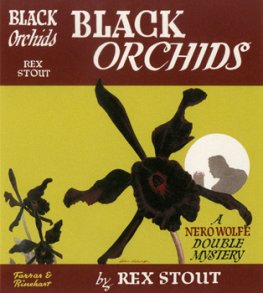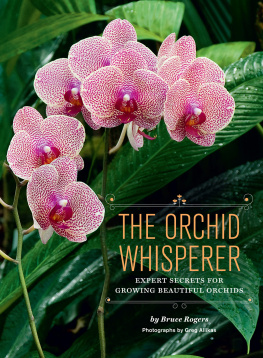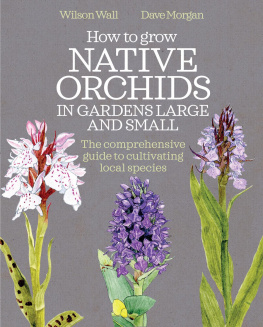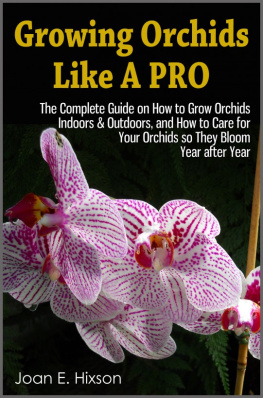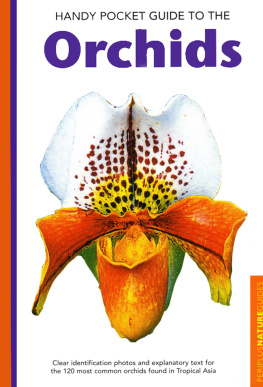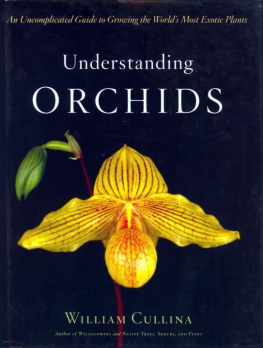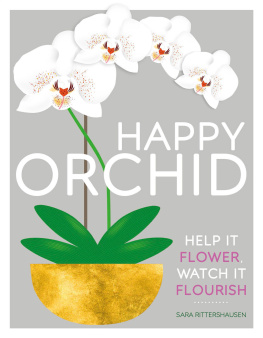Easy-Care Orchids
Mary Carol Frier
Introduction
When you shop at a garden center, the orchids in bloom are unmistakable. The foliage appears tough but looks somehow tropical, and the flowers are immediately arresting, with their strange form, subtlety of color, and compelling perfume. If you want to bring these beauties home with you but worry that you wont be able to keep them alive or make them flower, think again. Many orchids are no more difficult to care for than the average houseplant. The information in this bulletin will help you choose the right variety and help it thrive on your home windowsill. So get ready to bring home some exotica!
Diversity Is What Makes Them Easy Care
The Orchid family is one of the oldest and largest in the plant kingdom. It has hundreds of genera and thousands of species. Hybrids made from these species number in the hundreds of thousands. Orchids natural ranges are primarily in the tropical and sub-tropical regions of the world, but there are plenty of species indigenous to the temperate and even subpolar regions.
This broad diversity is good news for the amateur orchid grower; the flowers cultural requirements vary so much that there is sure to be at least one variety of orchid that will thrive on your windowsill. This bulletin will not only introduce you to orchids that will do well in your conditions of light and temperature but also help you keep these orchids flowering year after year. When properly cared for, orchids grow and flower for decades.
Light and Temperature: The Keys to Growing Orchids Successfully
Like all plants, orchids need light to grow; the trick is to have the right amount of light. Since most orchids grown as houseplants originate from the tropics, the optimal day length is generally a consistent 12 hours of light, followed by 12 hours of darkness. To begin the bloom sequence, most orchids need a slightly greater intensity of light than they normally require. For example, the popular Phalaenopsis, or moth orchid, normally prefers bright, indirect light, but in the fall months it requires brighter light to stimulate the bloom sequence that results in flowers the following winter or spring.
The Leaf Test
Your plants leaves will tell you when they are at an optimal temperature for growth. They will be slightly warm to the touch; that is, their internal temperature will be about 100105F. If leaves become too warm, they can burn or at least grow more slowly than they would at their optimal temperature. A fan that moves moist, moving air over the plants is good insurance against burning conditions.
After light, the correct temperature is the next important requisite for growing and flowering orchids successfully. Most orchids grown as houseplants will thrive with temperatures in the low 60s (Fahrenheit) at night and the high 70s to low 80s during the day. Conventional orchid-growing wisdom fine-tunes the concept of temperature even further, splitting orchids into three cultural groups warm, intermediate, and cool depending on their temperature requirements. This division is useful for optimizing growth but not really necessary for the windowsill grower. Getting the light level right for your orchid varieties is far more important.
To optimize temperature and light levels for your orchids, refer to the table on .
Note: The harm of overly hot conditions in your window can be lessened by running a fan that disperses moist, moving air over the plants. The moisture in the air acts as a heat sink and dissipates the heat of the sunlight streaming in the window. To generate airborne moisture, run a small humidifier in the plant-growing area or set the orchid pots over (not in) pans of water.
Other Concerns: Humidity and Fertilizer
After light and temperature, the relative humidity in your orchid-growing area becomes important. Humidity serves as a buffer to smooth out temperature fluctuations and encourages the even rate of transpiration that orchids prefer. The more humid the orchids native enviroment, the more humid it will prefer your windowsill to be. Phalaenopsis and Paphiopedilum orchids are both native to the tropics of Indonesia, so they prefer environments with about 60 to 70 percent humidity. Orchids with thick leaves and pseudobulbs, like Cattleyas, prefer a lesser humidity of 40 to 50 percent. Orchids with pseudobulbs but with thin leaves, such as Oncidiums, prefer conditions somewhere in the middle, at about 50 percent relative humidity.
Fertilizer is an important component of successful orchid culture, although its not nearly as important as light, temperature, and humidity. Any balanced product designed for houseplants will suffice. You may want to switch to a blossom booster fertilizer, with its high phosphorous content, about 3 months before your plants usually bloom; however, if you are using a balanced fertilizer, blossom booster isnt really necessary.
Definition
Pseudobulb: A fleshy, bulbous growth between the stem and the leaf.
Cattleya
Native to South and Central America, Cattleyas were once the object of many ill-fated explorations, subsidized by wealthy European connoisseurs, into the Amazon River Basin. The size, fragrance and dulcet colors of Cattleyas account for the Victorian madness that surrounded them. The names of some species, such as C. hardyana and C. harrisoniana, are often the only remaining memory of these fevered collectors from the late 1800s.
Flowering Characteristics
Cattleyas are often known as the corsage orchids, because they were the flowers of choice for wedding and prom corsages from the 1920s through the 1950s. In those early days, Cattleya flowers were white and multi-hued lavender. Since then, there has been an explosion of Cattleya hybrids, resulting in an incredible variety of colors, including red, yellow, green, and brown, which are sometimes found with secondary contrasting colors as well as spots and flares of additional color on the petals. These colors can be bold and almost overstated or pastel and delicate. Some flowers have large ruffled segments, as shown in the illustration. Other flowers are found in multiples and can be starry in shape, with or without frilled lips.
Cattleya flowers tend to last about 3 weeks. A standard Cattleya blooms annually, in the same season every year. A miniature Cattleya (whose foliage height is 10 inches or less) tends to flower two or three times a year. The compact Cattleya, a hybrid between the two, can take on the charactertistics of either parent.
Cattleyas offer an enchanting fragrance specific almost to the variety. It is a real bonus to walk into your growing area and have the signature sweet, spicy odor greet you.

This compact Cattleya offers large flower pizzazz in a manageable 15-inch-high plant habit.
The Cattleya Group
What is commonly called the Cattleya orchid is most often an intergeneric hybrid. Genera like Sophronitis, Epidendrum, and Laelia readily combine with Cattleya to produce hybrids, each with characteristics of the species involved. Over the past 20 years, many exotic intergenerics have been created, including Hawkinsara (Hknsra.) and Gerbera (G). The reasons for this hybridization are as numerous as the hybridizers, although they usually intend to introduce a new color to the palette, smooth out an interesting shape, or impart multiple flowers to a Cattleya that usually only produces one or two large flowers.


